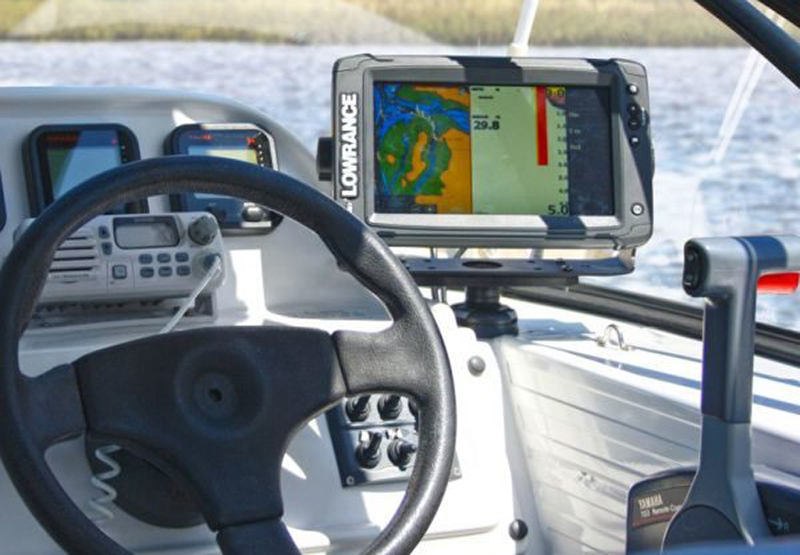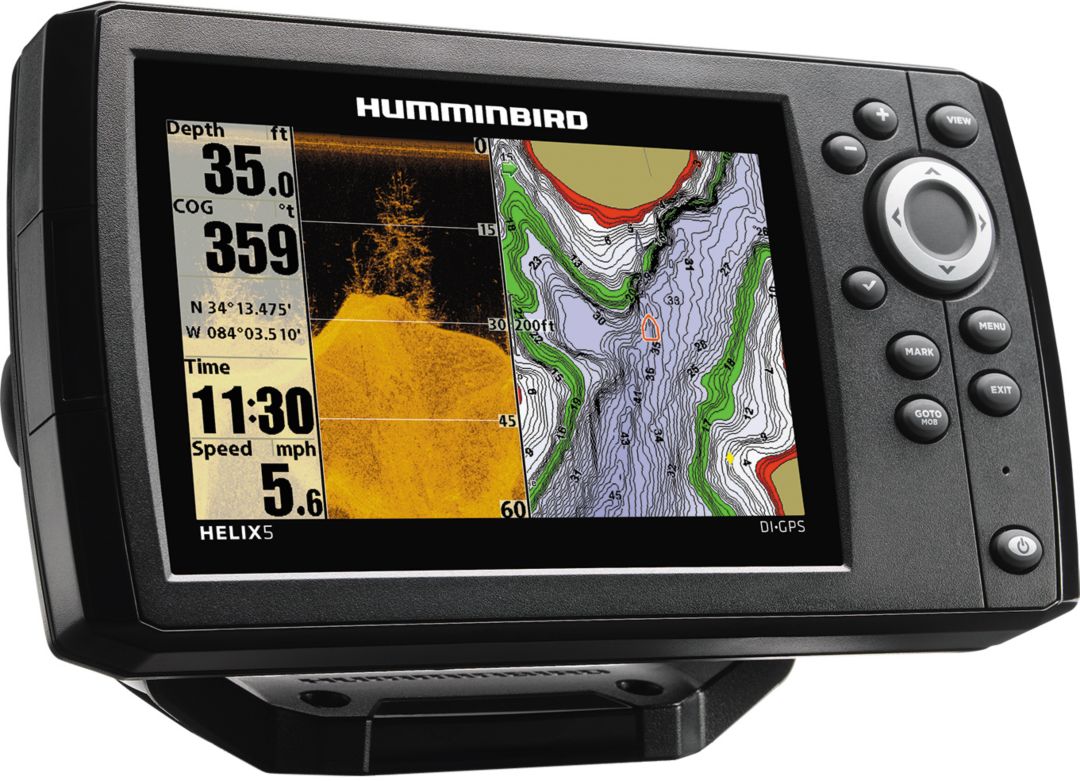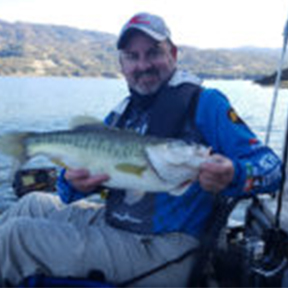Fish Finders: A Luxurious Necessity
Believe it or not, in the not-so-distant past, electronic fish finders were regarded as a luxury. Once relegated solely to powerboats, these bulky units were tied into the primary boat batteries, and their performance was mediocre at best. The resolution of the sonar image shown on the screen was comparable to watching an early game of Zelda — but more confusing to understand. Fast forward to the present day. Now, for a fraction of the cost, electronic fish finders are armed with pinpoint-accurate GPS systems, lower battery consumption, and ultra-high-resolution imaging from multiple directions — something comparable to what is used by modern-day physicians. Like all computer-based products, the quality of these new fish finders has gone up exponentially while the cost has dropped to a level where even the first-time kayaker can afford one. The questions remain though, and I hear them day in and day out at my shop. “Why do I need a fish finder? I’m not fishing.” Or, “I don’t need one of those. I know this water like the back of my hand, and I know where the fish are.” Both are perfectly good points as to why you DO need electronics. Let me explain.
Where Am I?
Back in the day, the tried and true compass and map technique were all you had to determine your position. Even today, long-range touring kayakers and large-scale fishing yachts will have analog compasses on board as a backup to their electronics. Luckily, the GPS systems in today’s electronics are far more accurate and reliable than their original counterparts. When commercial GPS units originally came out, the military was worried some looney would use one to make a missile. As a safeguard, they put restrictions on how accurate those GPS units could be. These days, however, you can get within 10 feet or less of the waypoint you marked months ago. Even on a unit costing less than $200, accurate longitude and latitude coordinates can be displayed for you to give to anyone from your fishing buddies to the Coast Guard (hopefully not the latter!) The right GPS unit will also help keep you from fishing in areas that are off-limits due to geographical location or depth restrictions.
How Did I Get Here?
Whether you are fishing freshwater or saltwater, conditions can change in seconds and put you in a situation where you can’t tell where you are. I have had the fog come in behind me off the Northern California coast and make the coastline completely disappear. You cannot trust wind and swell directions to lead you back home safely. It is times like these where your fishfinder/GPS can save your life. GPS units will track and record your route from the minute you turn them on, leaving you only to follow the trail and kayak-by-wire right to your launch point. You can use the same record of your route to head back to a productive fishing spot you found on the way out and give it a few more tries before moving on. Knowing exactly how you got there is just as, if not more, important than knowing precisely where you are. Many fishfinder/GPS combo units have SD card slots built in to record and save your routes so you can hit those same productive runs again, even if you first encountered them months ago.
What the Heck is Under Me?
Ask many anglers today, regardless of species they are chasing, and they will tell you “Find the structure, and you’ll find the fish.” This statement is true for a huge number of species and many types of structure. From rocky underwater pinnacles holding lingcod and rockfish to sunken laydown trees where lunker bass make their home, finding structure is a huge part of being successful on the water. Today’s fish finders, armed with features like down scan, side scan, and total scan, give anglers an unbelievably accurate look at just what is underneath them. The computer processors (yes, these things are little computers) in the fish finders of today have gotten so fast that you can see fishing swimming in real-time!
There are many great choices when it comes to fish finders for kayaks. It all depends on the features you want and the budget you’re working with. The unit I personally run on my Hobie is a Humminbird Helix 5 DI/GPS. It has as a 5-inch screen that is plenty big enough for me to see what’s going on underneath me (although I am looking at upgrading to the 7-inch model!) This unit has given me opportunities to find fish where I never could have before. With it, I see schools of stripers under a giant bait ball of shad. Without it, I see flat water. With it, I see transition points between rock and sand, where lingcod hang out. Without it, I see nothing but the surface of the ocean.
Being Safe AND Successful
My advice to someone looking to outfit their kayak with a fishfinder/GPS unit is simple: Purchase the best one you can comfortably afford. Find one that fits your needs as both an angler and a safe boater. In my opinion, GPS is a must. I wouldn’t even look at units that didn’t have a GPS system. Beyond that, decide what size screen you want — and where you plan on mounting it. For the record, YakGear offers some great RAILBLAZA electronic mounts. Once you have a good idea of the size and location, look at the different choices and their features. More importantly, consider their benefits as they pertain to you. Watch video reviews of the different units and see what people had to say about them. In the end, the decision of which unit to get — and the decision of whether to get one in the first place — should be a no-brainer.
YakGear Brand Ambassador Jef Brewer was four years old when his father first introduced him to fishing on the banks of Northern California’s Hat Creek. The young sportsman surprised everyone on that initial trip when he landed a sizable rainbow trout. Today, some 45 years later, he still finds the same joy and excitement from every fish he catches. Jef has focused primarily on bass over the past 20 years, chasing largemouth and smallmouth varieties across California, and competing in tournaments. He has been a member of the Hobie Fishing Team for seven years and, in 2017, was named a Hobie Top Gun Angler.



